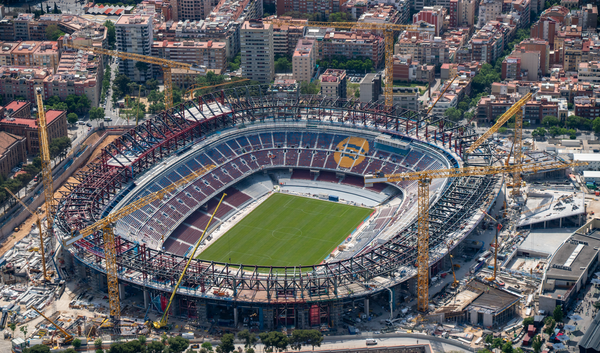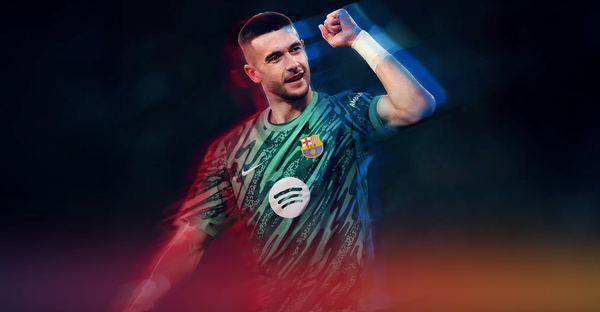Tactical analysis: Xavi's era begins with a win
Fortunately, just as Johan Cruyff did more than 30 years ago, Xavi starts off his coaching journey at the Camp Nou with a victory over their bitter city rivals.
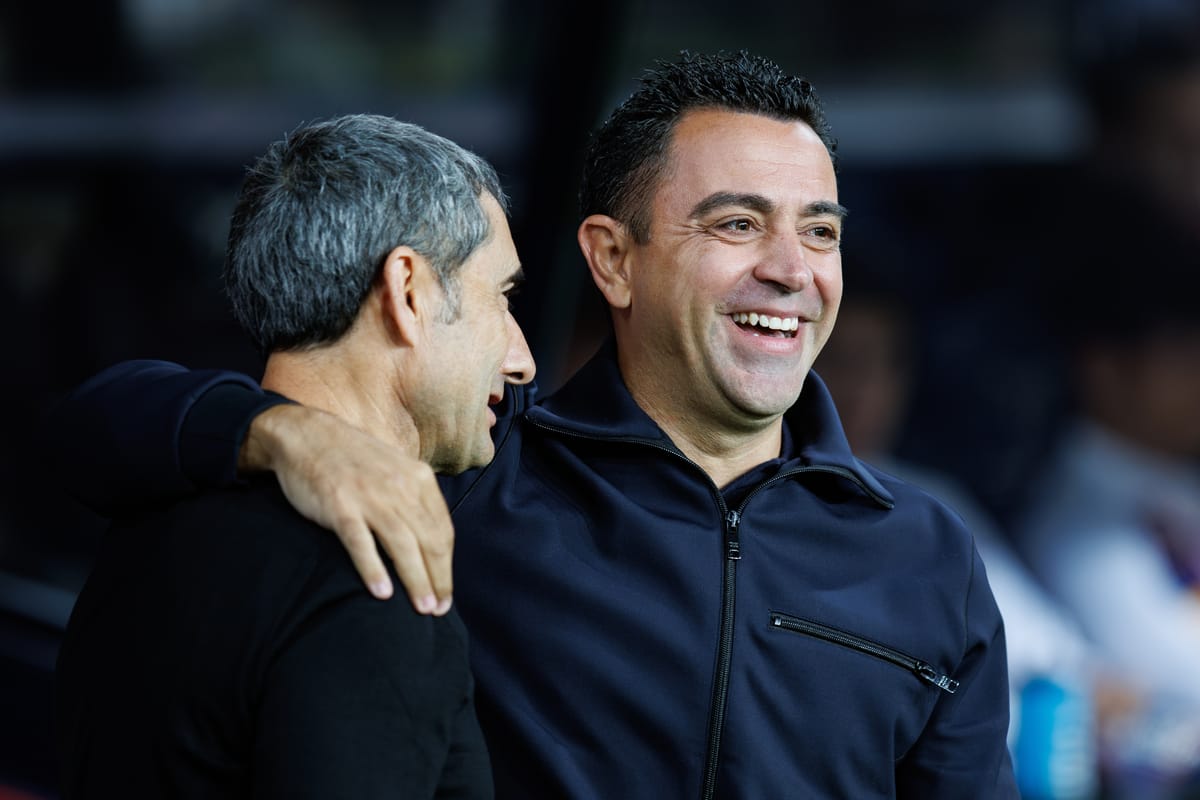
Mid-season appointments are by and large only the last resort football clubs have to salvage whatever there is to salvage from their campaign. Or at least they should be. Why? Well, because generally speaking, there is little the new coach can do to immediately rectify the damage that had been inflicted beforehand.
Usually, there is no time to implement new structural and tactical changes, there is no pre-season to test it out and no necessary period of getting to know the players, the hierarchy and the staff. All of that plays a big role in any new coach’s success, Xavi Hernández not being the exception to this rule. However, there is a difference here.
Xavi is not stepping into the unknown; yes, it’s been five years since he’s set foot at the Camp Nou and a lot has changed in that period. Sadly, most of it has changed for the worse. Barcelona are now, for all intents and purposes, a faltering giant struggling to stay afloat. But they are also his home and he knows what ingredients they’re missing to climb back to the top of the mountain.
Before we analyse his first game in charge, a short sidenote - very little can and should be concluded with a largely irrelevant sample of just one game. Just as you can’t properly scout a player in a single game, there is no way you can make a verdict about a new coach either. That’s the caveat we’re playing with here.
With that being said, the win against Espanyol did give us a glimpse of what might come next. Let’s jump right into it.
In-possession principles
Ronald Koeman’s Barcelona have been described as lost and even more importantly, without a clear idea of how to attack or defend. The players themselves have spoken out about this identity crisis as Óscar Mingueza said ‘the team stopped trusting [Koeman’s methods] and everyone tried to fix things on their own.’ Whether or not it was within his right to make such comments is a story for a different occasion.
What does matter, however, is that this was visible on the pitch; Barcelona were stripped of their philosophy and needed someone capable of restoring it. Enter Xavi, a man of strong principles and clear ideas of how football should and will be played in Catalonia. I’ve spoken about his ideology and approach in the latest edition of the Total Football Analysis magazine, which will be out and available pretty soon.
We’re not going to dissect his Al Sadd tactics here but we did touch upon them in the previous analysis on Pedri & Gavi so make sure to check it out if you haven’t yet! Essentially, as almost every single one of his predecessors, Xavi will insist on possession, domination and positional play. Of course, his predecessors have all tried implementing those aspects with varying levels of success but none were as equipped to maintain them as Xavi arguably is.
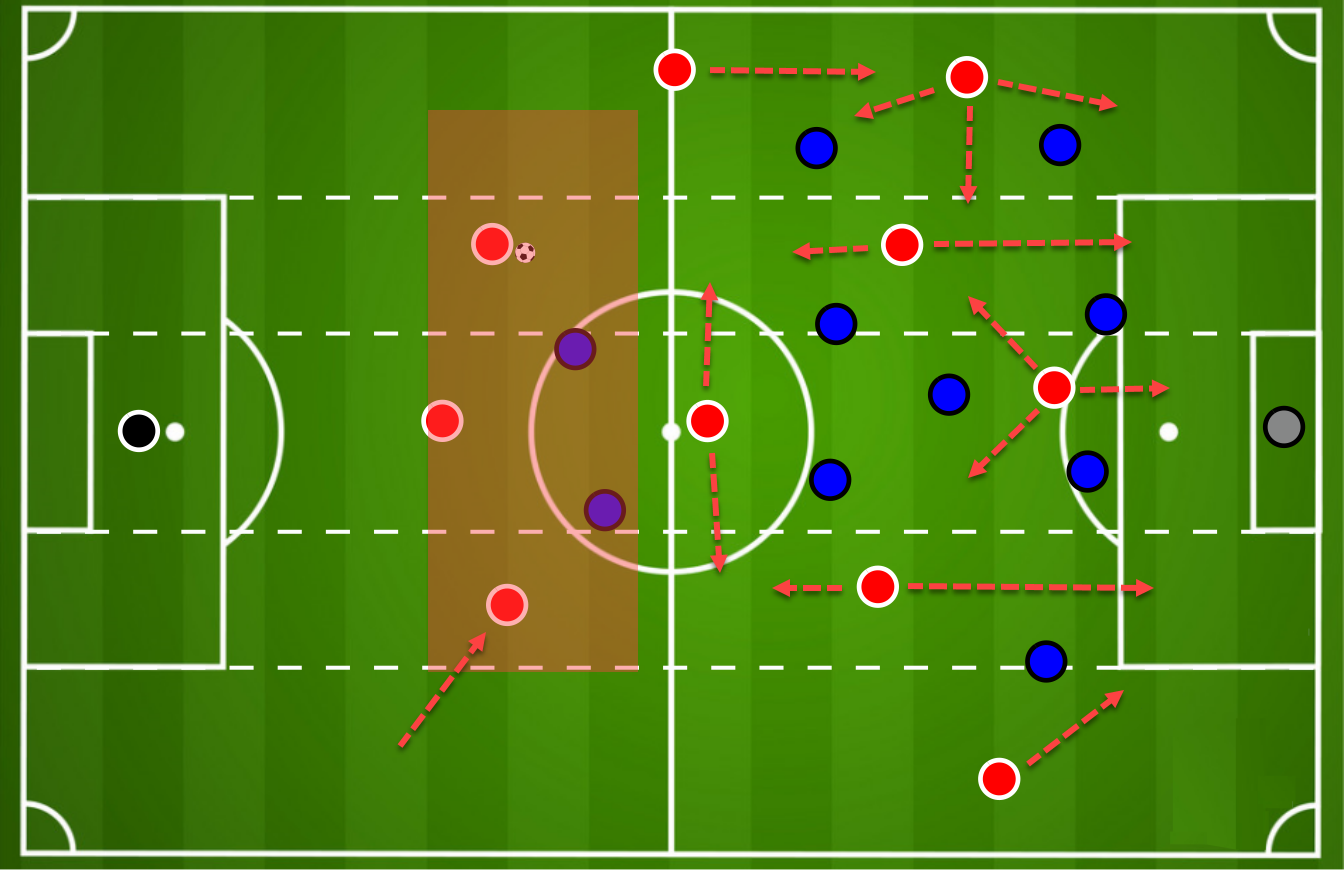
Above, you can see what Barcelona’s basic structure in possession looked like against Espanyol. Xavi deployed the traditional 4-3-3 and while we did see his signature three-in-the-back system at times, that was heavily dependant on the opposition’s defensive block. You see, Xavi loves the ‘+1’ rule in the first phase of build-up. That rule states that you only ever need a single additional player to achieve numerical superiority needed to advance play.
It is for that reason I believe he didn’t go for the 3+2 structure with the double pivot, as many - myself included - thought might be the case upon his arrival. Espanyol sat in a deep 4-1-4-1 block that transformed into a 4-1-3-2/4-4-2 and then into a 5-4-1 as the game went on. This meant that Barcelona only ever needed a two or a three-man backline to achieve superiority and bypass the first line of the press - the +1 rule. Another important aspect of Xavi’s philosophy is the positioning of the full-backs.
Initially, they are much deeper on the pitch, assisting the build-up when needed. That’s why even Jordi Alba would start close to the backline, only advancing once the play was transferred to the final third. Mingueza, on the other hand, is quite limited in his offensive output and was hence often seen tucking in as the third centre-back or occupying a more inverted role in the right half-space, creating overloads through superiority. Then we come to the interiors, Frenkie de Jong and Nico González.

Needless to say, they play a crucial role in Xavi’s philosophy. The interiors are tasked to occupy strategical areas on the pitch, receiving the ball in the half-spaces and then orchestrating attacks through them. However, they are also very aggressive off the ball, as we’ve seen time and again yesterday night. Both Frenkie and Nico would consistently attack space and prompt the deeper-positioned teammates to go for threading long balls. As a whole, I still feel this was underutilised as we haven’t seen Barcelona go through with such a sequence often enough.
The forward line was interesting and quite telling as well. Gavi is nowhere near a natural winger and Ilias Akhomach, while certainly capable of it, was played as an inverted winger who would start wide but then inevitably cut in as he received possession. Still, both of them would hold width in the first phases of attack, which is very important. The difference, however, was quite obvious as well. The left side was much more active, contributing to 21/38 positional attacks on the night while the right sat at only eight.
Alba’s presence is still huge in Barcelona’s attacking tactics and so is Memphis Depay’s tendency to drop into the left half-space. When you add Gavi and De Jong into the mix, it’s easy to see why that was favoured over the Ilias/Mingueza/Nico trident on the other side. But every structure and formation has one goal in mind - to maximise the players’ potential, i.e. enhance their strengths while masking their shortcomings. With such technical advantage on the left, Barcelona would often overload that side and use the qualitative (and often numerical) superiority to outplay Espanyol in tight spaces.

Ilias’ strength, on the other hand, is isolated 1v1 duels. So this approach made sure he would get into those scenarios as often as possible, which was also the case - even more so - with the introduction of Abde Ezzalzouli in the second half. Both are players of great technical quality but with pace, dribbling and verticality built into their kit. The ‘overload to isolate’ tactic would look to make sure they would get those 1v1 chances as often as possible.
All of that looks good on paper but there were some niggling issues throughout the clash. Barcelona looked good in the build-up and have also managed to create some good chances but were still lacking in both boxes. Their 1.56 xG to Espanyol’s 0.95 suggests the victory was well-earned but the controversial penalty had tipped the expected goals value in Barcelona’s favour quite a bit.
While the right side was largely underutilised with Ilias on the pitch, it still had cleaner execution than the left. Yes, it was also much simpler too - achieve the isolation and then once Ilias receives in a 1v1 duel out wide, Nico would dart forward and wide to either drag the marker with a dummy run or complete the overload. A simple one-two would then eject Akhomach onto his stronger left foot and in a good shooting position. Contrast that to the left where De Jong and Gavi would often occupy the same area, making it that much easier for Espanyol to box them in.
In theory, when Alba overlaps, Frenkie should make the run while Gavi then tucks into the interior area. If timed well, you get Alba & De Jong attacking space while Gavi receives in the half-space. But if you don't time it well, you get two key players easily marked out by the defensive block. Needless to say, that requires a lot of coordination that Xavi simply didn’t have the time to achieve.
But clear changes were also seen off the ball which brings us nicely to the second part of this analysis.
Defensive principles
Xavi’s defensive tactics are based on aggressiveness and intensity. The best stats that show us this was the case yesterday are recoveries, fouls and PPDA (passes allowed per defensive action). With 77 recoveries, four above the season average, 30 of which were made in the opposition’s half of the pitch, 17 fouls, 10 more above the season average and 5.95 PPDA, 3.66 lower than the season average (lower means fewer passes allowed for the opposition and more intense pressing), Barcelona were much more aggressive than usual.
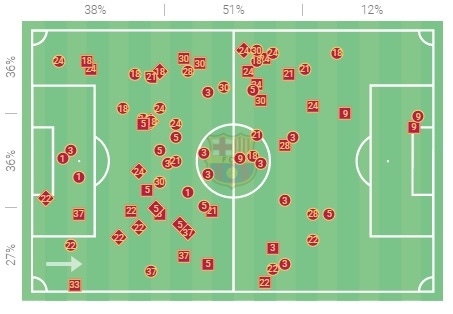
Above you can see their recoveries on the night, with Eric García (13), Gerard Piqué (11) and Sergio Busquets (10) leading the line. This implies aggressive exits of the centre-backs and high emphasis on middle-third collapses. We’ll touch upon that one shortly. It is, however, important to note that these pressing resurgences are quite common in the first couple of games under a new coach.
The team usually gets a lift in spirit with a change of environment and it results in a lot more energy and enthusiasm early on. For that reason, it will be interesting to see whether it stays consistently high or peters out eventually, as was the case under Koeman, Quique Setién and even Ernesto Valverde. One thing is clear, however, Xavi loves to press high and will at least try to make this Barcelona’s strength once more.
And as the man himself explained for Coaches’ Voice, he likes to implement a strong man-marking scheme that mimics the opposition’s structure and aims to win possession as close to the goal as possible. We saw a very similar approach yesterday against Espanyol.
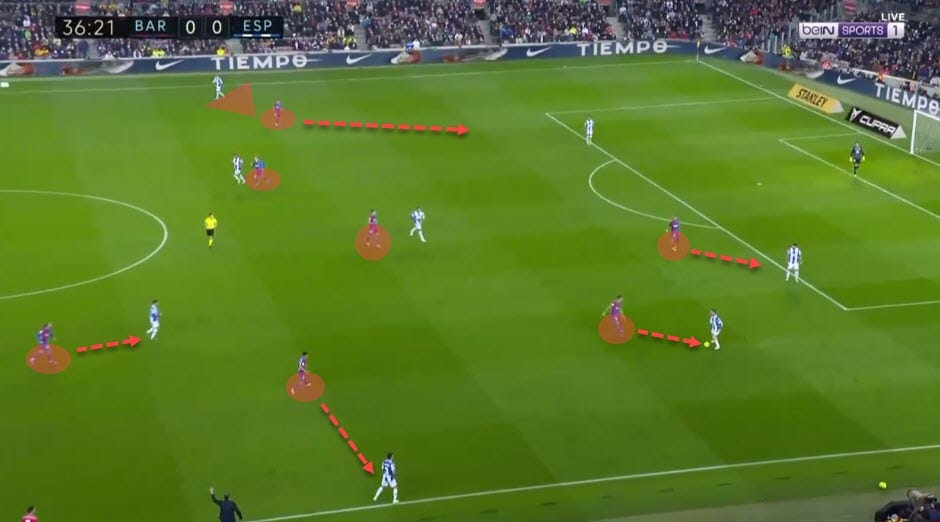
One midfielder would usually join Memphis up top while the rest man-marked their counterparts on the pitch. Barcelona were quite effective in this and managed to keep their city rivals quiet for the majority of the game, especially in the first half. Another big reason why this was successful was the counter-press.
Essentially, counter-pressing is attempting to win the ball back aggressively and quickly immediately upon losing possession. For that to be successful, it requires a balanced in-possession structure that lends itself nicely to a good counter-press. Often, it involves close connections between the players and a safety net just behind the ball.
Xavi’s three-in-the-back system with a pivot and with either a deep full-back or a dropping interior aims to provide just that. In case the ball is lost, the structure is in place for an immediate collapse. You can see a good example of that down below.
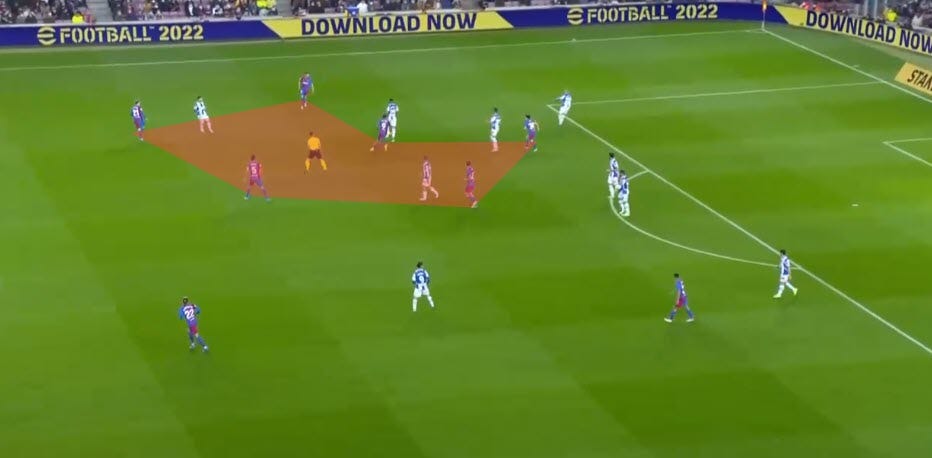
But as time went on, the cracks in fitness and mentality started to show. Barcelona are still a psychologically broken team and a team that’s not used to maintaining intensity for long periods of time. As soon as Espanyol gained some momentum, the Catalans succumbed to it. The end result was a very nail-biting finale that could’ve gone either way.
Fortunately, just as Johan Cruyff did more than 30 years ago, Xavi starts off his coaching journey at the Camp Nou with a victory over their bitter city rivals. But as I’ve said before, this is just a sample of one game and ultimately, it only paints a tiny and largely irrelevant part of the full picture.
However, we’ve seen some positives and will hopefully continue seeing them as the season progresses. The negatives, too, shouldn’t be overlooked. This was far from a dominant display but that was to be expected. As long as the expectations are dosed for now and the outside cirumstances taken into consideration, Barcelona can still have a successful 2021/22.
A new era dawns with The Maestro at the helm of it. So let’s stay calm and give him time to work his magic, as I’m sure he will.

